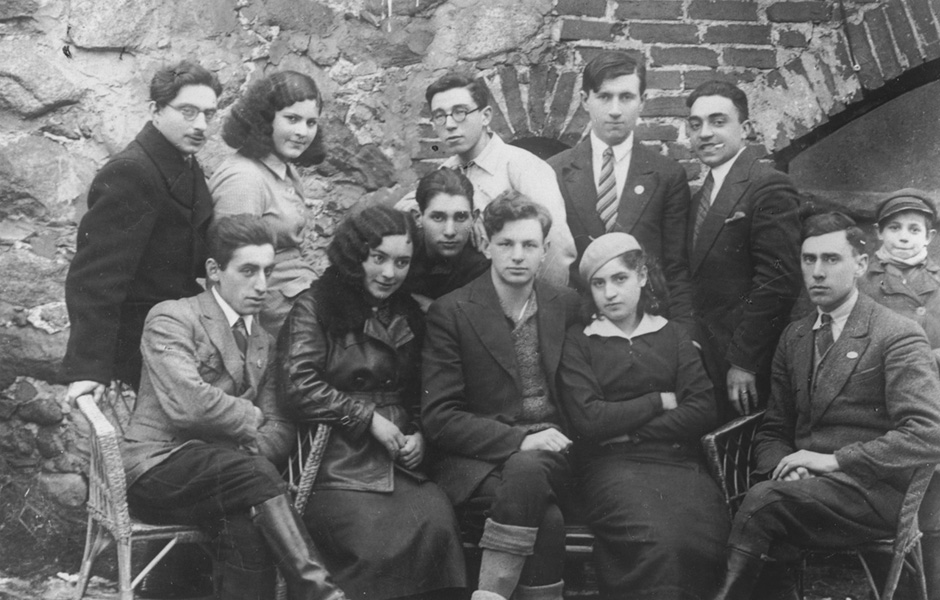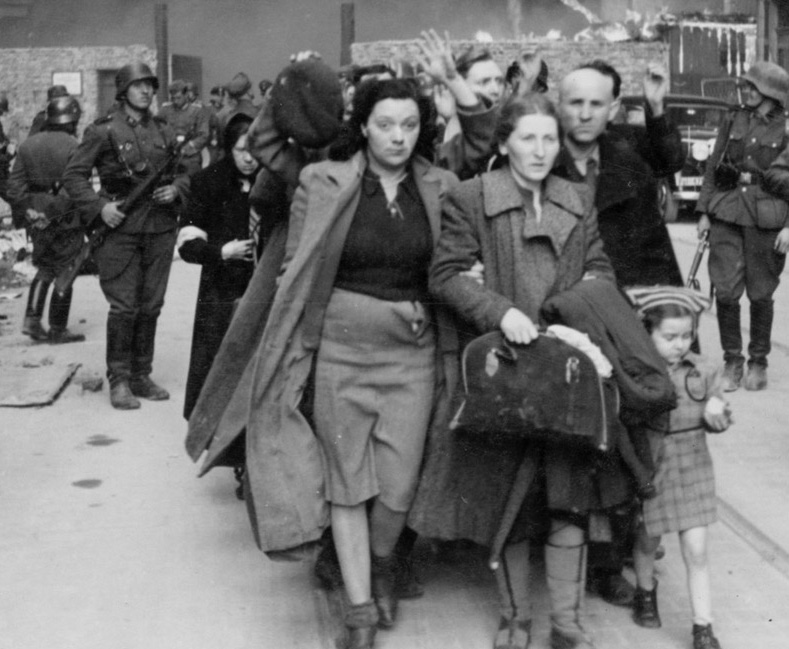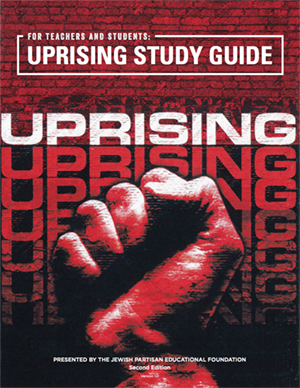The Warsaw Ghetto was sealed in mid-November, 1940. Deportations ramped up from July on, in 1942, and over the summer, 265,000 Jews were deported from Warsaw to Treblinka, an extermination camp. More than 10,000 were also sent to labor camps. Just about 60,000 Jews remained in the ghetto.
Jews were told they were being resettled to work, but many in the ghetto knew or suspected more ominous fates. Through the fall, groups met and organized for self-defense and to plan for resisting future deportations. The Jewish Combat Organization (ZOB) and other factions smuggled some weapons into the ghetto with support from the Polish Underground. When a deportation began on January 18, 1943, Jewish Fighters attacked, surprising the Nazis. This pre-figured the later revolt and proved to the Fighters and other Jews that armed resistance was possible. The SS withdrew within a few days. A mass deportation had been stymied for the first time. Stunned, the Nazis began preparations for the complete destruction of the ghetto.



